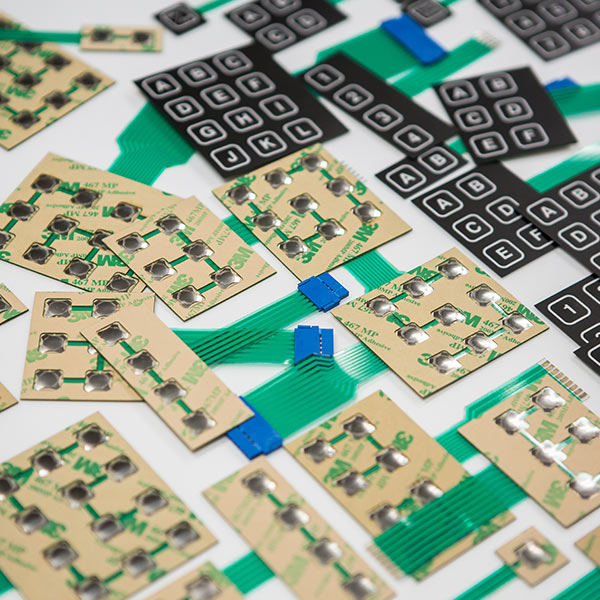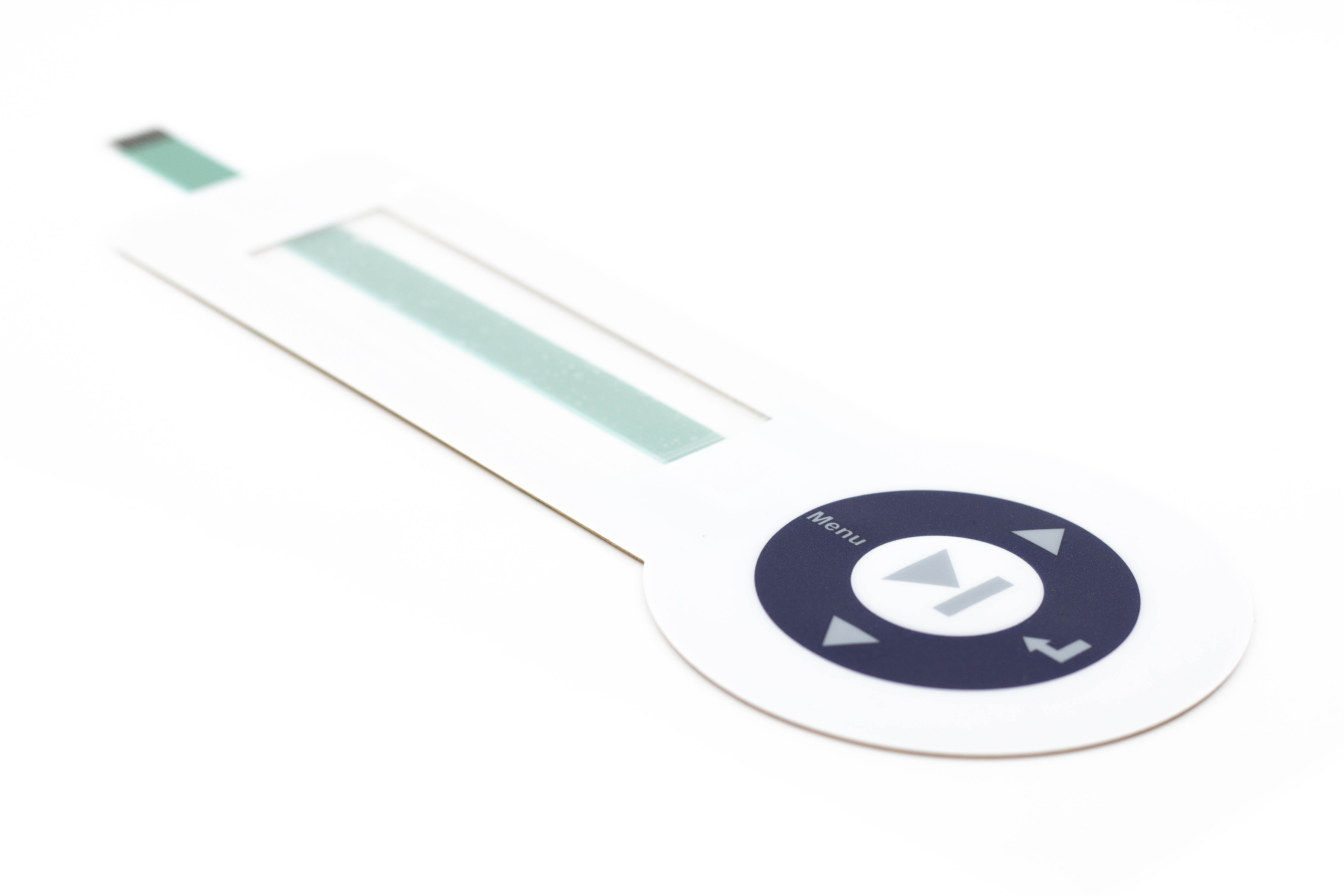Membrane Changes Explained: A Comprehensive Overview to Their Advantages
Membrane layer changes represent a innovative and versatile service for producing user interfaces throughout a variety of sectors. As sectors significantly look for reputable and efficient control user interfaces, comprehending the specific advantages and applications of membrane changes becomes necessary.
What Are Membrane Switches?

When stress is put on the membrane layer button, the layers make call, completing an electric circuit. This easy system enables a wide variety of applications, from customer electronics to commercial equipment. Membrane layer switches are usually designed to be resistant and waterproof to dust and impurities, making them ideal for environments where toughness is necessary.
Furthermore, the flexibility of the materials used in membrane layer changes promotes ingenious styles that can satisfy numerous shapes and dimensions. This versatility contributes to their popularity in diverse areas, including medical gadgets, automobile controls, and home devices. On the whole, membrane switches over represent a vital aspect in modern-day user interface innovation, connecting the void in between individuals and digital systems.
Trick Advantages of Membrane Layer Switches
Amongst the myriad of customer interface alternatives available, membrane switches stand out for their one-of-a-kind mix of advantages. One of the main advantages is their light-weight and portable layout, which enables assimilation right into a wide variety of gadgets without including significant bulk. This is particularly advantageous in applications where space is limited.
In addition, membrane switches over offer toughness and resistance to ecological aspects. They are normally constructed with materials that can stand up to dampness, dirt, and various chemicals, making them suitable for harsh conditions. This durability adds to a longer life-span compared to typical mechanical switches.
One more considerable benefit is the convenience in personalization. Membrane switches can be published with various graphics, shades, and textures, enabling tailored designs that fulfill certain branding or useful needs. This versatility prolongs to the number of layers and circuit choices, providing designers with several arrangements.
Furthermore, the responsive feedback supplied by some membrane layer switches enhances user experience, making them extra intuitive to operate. Lastly, the convenience of cleansing and maintenance even more strengthens membrane layer switches as a sensible choice in both customer and commercial applications. Membrane Switches. On the whole, these essential advantages make them a recommended solution for several designers and producers
Applications in Different Industries
How do membrane layer switches locate their location across diverse sectors? Their versatility and functionality make them indispensable elements in sectors ranging from healthcare to customer electronic devices. In medical tools, membrane switches are made use of for their simplicity of cleansing and like it resistance to contamination, guaranteeing hygiene in environments where sterility is important.
In the consumer electronics industry, these buttons give smooth, straightforward user interfaces that enhance product visual appeals while maintaining toughness against wear and tear. Automotive applications gain from membrane layer changes as well, where they are used in control panels and control panels, supplying trusted performance in challenging problems.
In addition, commercial equipment uses membrane layer switches for control board because of their effectiveness, ability to withstand severe environments, and customizable layouts that deal with certain operational demands. The food market leverages membrane buttons for their ease of usage and resistance to spills, guaranteeing functional performance in hectic settings.
Eventually, the adaptability of membrane changes across these varied applications underscores their crucial duty in modern-day technology, boosting individual communication while satisfying industry-specific requirements. Their continued advancement guarantees additional integration right into emerging areas and innovative items.
Style and Customization Options
The style and personalization choices readily available for membrane layer buttons are important for tailoring user interfaces to satisfy details user demands and aesthetic choices. These buttons can be developed in various shapes, dimensions, and designs, enabling for smooth assimilation right into varied applications. The versatility in layout suggests that manufacturers can develop special user interfaces that enhance functionality and maintain brand identification.
Custom-made shades, graphics, and textures can be related check my site to the surface of the membrane switch, providing a possibility for branding and individual involvement. Additionally, backlighting choices, such as LED illumination, can be included to improve exposure in low-light problems, thus enhancing functionality.
Functional aspects can also be personalized, including responsive comments and actuation force, which can be adjusted to match various individual communications. The selection of materials, such as polyester or polycarbonate, enables variations in resilience and environmental resistance, dealing with the particular demands of different markets.
Eventually, the comprehensive style and personalization abilities of membrane layer switches enable firms to produce aesthetically attractive and easy to use interfaces, making sure that their products meet both functional and visual demands effectively. Membrane Switches.
Factors To Consider for Execution
Executing membrane layer switches over requires careful factor to consider of numerous factors to make sure optimal functionality and individual experience. Factors such as exposure to moisture, extreme temperature levels, and chemical materials can substantially influence the switch's efficiency and durability.

Another crucial element is the button's style and format. Ensuring that the responsive feedback and actuation force line up with user assumptions enhances use. Carrying out individual screening can supply important insights into the optimal design.
Additionally, compatibility with digital parts should be analyzed. The button's circuitry need to straighten with the total system style, making sure trusted signal transmission and lessening interference.
Additionally, manufacturing approaches and expenses must be evaluated. The choice between personalized designs and conventional models can affect both budget plan and lead time.
Last but not least, take into consideration upkeep and repair. Membrane switches might call for particular cleansing and treatment procedures to keep their appearance and performance gradually. By resolving these considerations, companies can carry out membrane buttons that satisfy their operational needs while offering a positive user experience.

Conclusion
In verdict, membrane layer switches represent a flexible and durable control user interface ideal for a wide variety of applications across several industries. Membrane Switches. As technology continues to progress, my response the significance of membrane buttons in modern gadgets stays substantial, supplying both performance and aesthetic charm.
Membrane layer changes stand for a flexible and sophisticated service for producing customer interfaces throughout a range of industries.Understanding the basic parts of contemporary digital user interfaces, membrane buttons are a type of customer interface tool that are composed of flexible, slim layers of product. In general, membrane layer switches represent an important component in modern customer interface innovation, bridging the space in between users and digital systems.
Among the myriad of customer interface alternatives readily available, membrane layer switches over stand out for their special mix of benefits.The design and customization choices offered for membrane layer switches are essential for customizing interfaces to meet particular individual demands and visual choices.